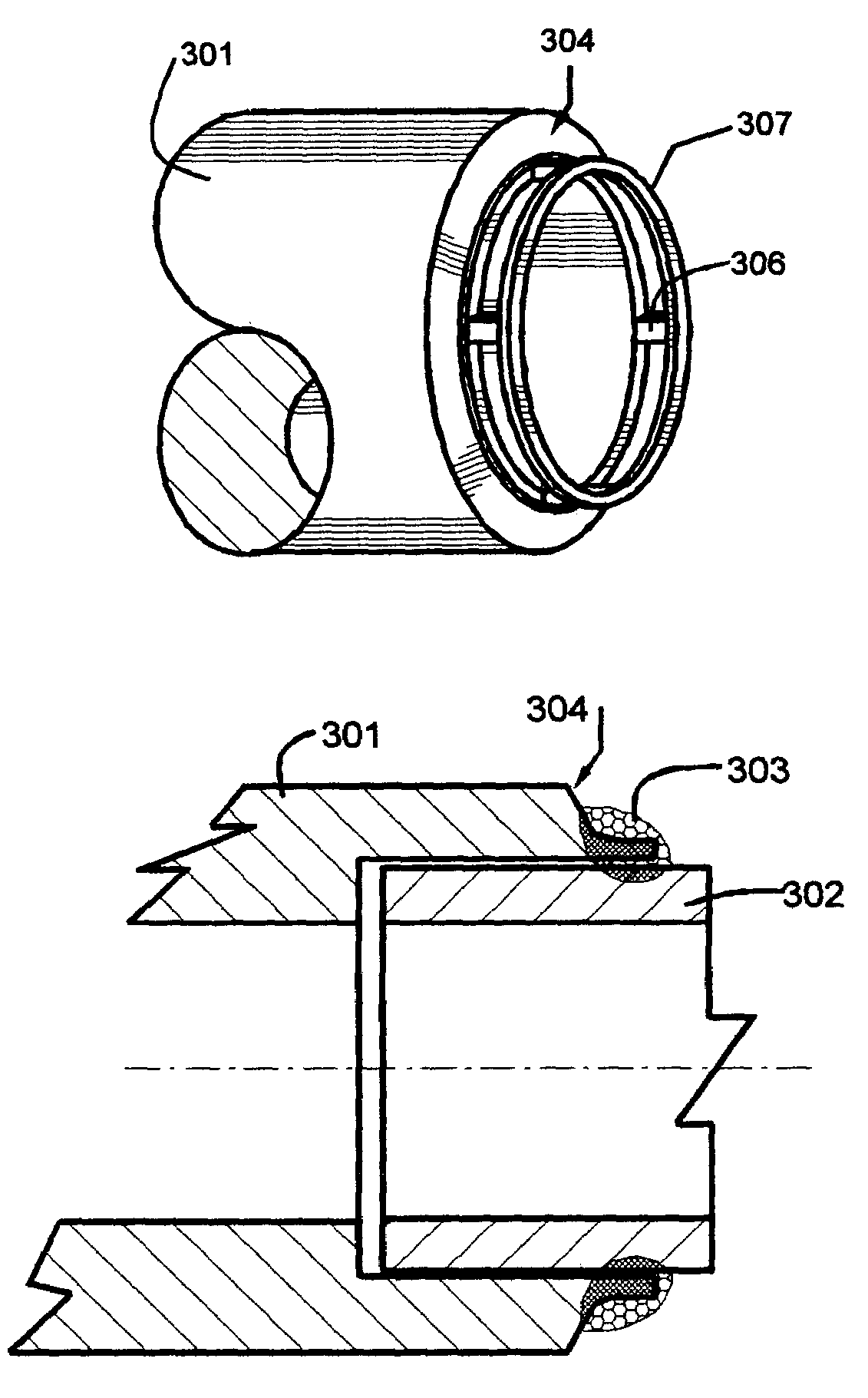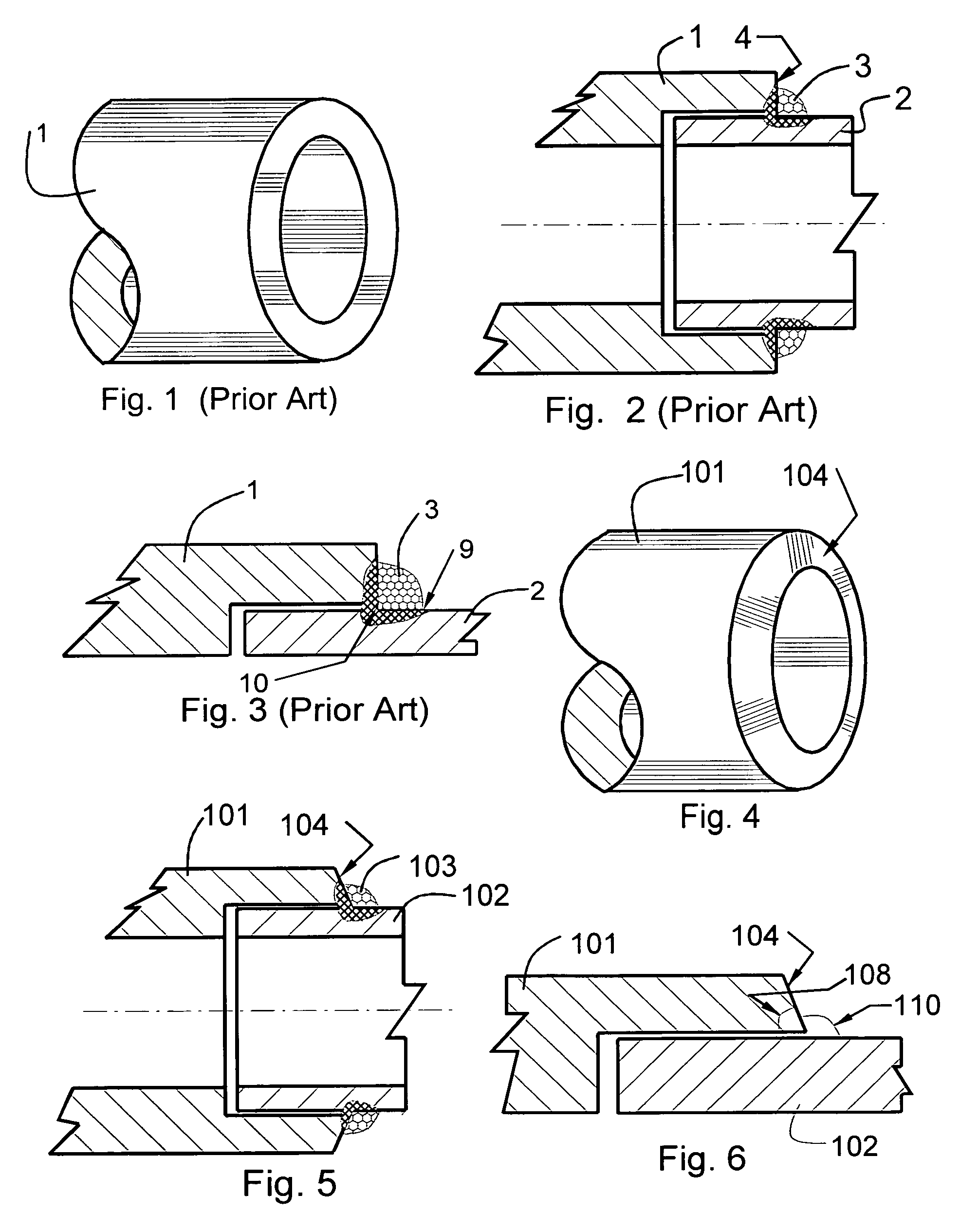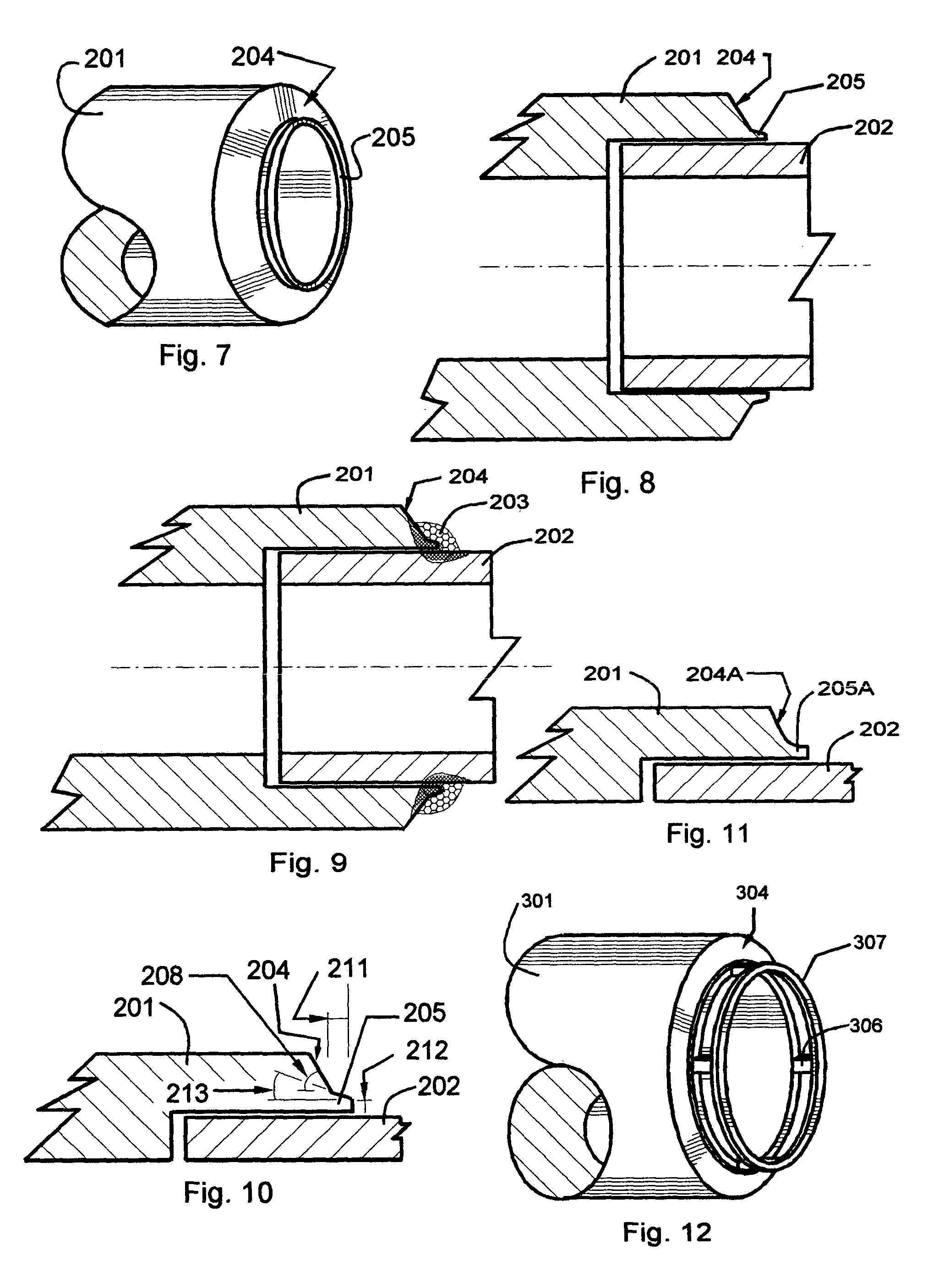Socket-welded pipe joint
a joint and socket technology, applied in the direction of pipe joints, non-disconnectible pipe joints, mechanical equipment, etc., can solve the problems of loss of production and revenue, personal injury, plant shutdown, etc., and achieve the effect of reducing residual stresses, fewer failures of joints, and better fusion of metal
- Summary
- Abstract
- Description
- Claims
- Application Information
AI Technical Summary
Benefits of technology
Problems solved by technology
Method used
Image
Examples
first embodiment
[0039]the invention is shown in FIGS. 4, 5 and 6. Similar to the prior art configuration, this embodiment has modified socket-welded fitting 101, the end of the pipe segment 102 inserted inside the socket, and a weld 103. The view in FIG. 5 is after the welding is performed with some of the pipe and fitting base metal fused. The difference between the prior art configuration shown in FIGS. 1–3, and this embodiment is that the edge 104 is chamfered as shown in FIG. 5, while prior art edge 4 shown in FIG. 2 is vertical and 90° to the wall of the pipe segment 2. (As used herein, the term “chamfer” refers to an annular surface which has been cut, or is shaped as though it had been cut, from surface which included a 90 degree angle; as viewed in cross section, the surface of the chamfer may include one or more straight lines and / or curves.) Additionally, the size and profile of the weld 103 in FIG. 5 may be different compared to the profile of the weld 3 in FIG. 2. The weld size and prof...
second embodiment
[0044]FIG. 11 shows a variation of the second embodiment in which the surface of lip 205A merges gradually into the remainder of chamfered edge 204A. That is, the profile of the major portion of the chamfered edge is a curve rather than two intersecting straight lines.
[0045]The third embodiment is shown in the FIGS. 12, 13, 14 and 15. Similar to the second embodiment, this embodiment has modified socket-welded fitting 301, the end of the pipe segment 302 inserted inside the socket, and a weld 303. Chamfered edge 304 includes inwardly flared surface 305 and thin metal bars 306 extending parallel to the longitudinal axis. The size and number of the bars will be based on the diameter and the thickness of the pipe segment 302 and the necessary strength of the weld joint. Chamfered edge 304 also includes a ring 307, which provides better fusion and reduces residual stresses at the toe of the weld. The metal bars 306 are provided to connect the ring 307 to, and accurately spaces it from, ...
third embodiment
[0046]The advantage of this third embodiment is that more heat of the welding will be used in melting the base metal of the flared surface 305, metal bars 306, and the metal ring 307, as well as some of the base metal of the remaining, larger diameter portion of edge 304, thereby reducing the residual stresses and providing better fusion. This embodiment will also provide reduction in the failure initiated at the toe of the weld 303 in addition to reducing failure at the root. However, this embodiment is slightly more complicated than the first two embodiments.
[0047]The fourth embodiment is shown in FIGS. 16, 17, 18 and 19. Similar to the third embodiment, this embodiment has modified socket-welded fitting 401, the end of the pipe segment 402 inserted inside the socket, and a weld 403. Chamfered edge 404 includes inwardly flared surface 405 and thin metal bars 406 extending parallel to the longitudinal axis. The size and number of the bars will be based on the diameter and the thick...
PUM
 Login to View More
Login to View More Abstract
Description
Claims
Application Information
 Login to View More
Login to View More - R&D
- Intellectual Property
- Life Sciences
- Materials
- Tech Scout
- Unparalleled Data Quality
- Higher Quality Content
- 60% Fewer Hallucinations
Browse by: Latest US Patents, China's latest patents, Technical Efficacy Thesaurus, Application Domain, Technology Topic, Popular Technical Reports.
© 2025 PatSnap. All rights reserved.Legal|Privacy policy|Modern Slavery Act Transparency Statement|Sitemap|About US| Contact US: help@patsnap.com



